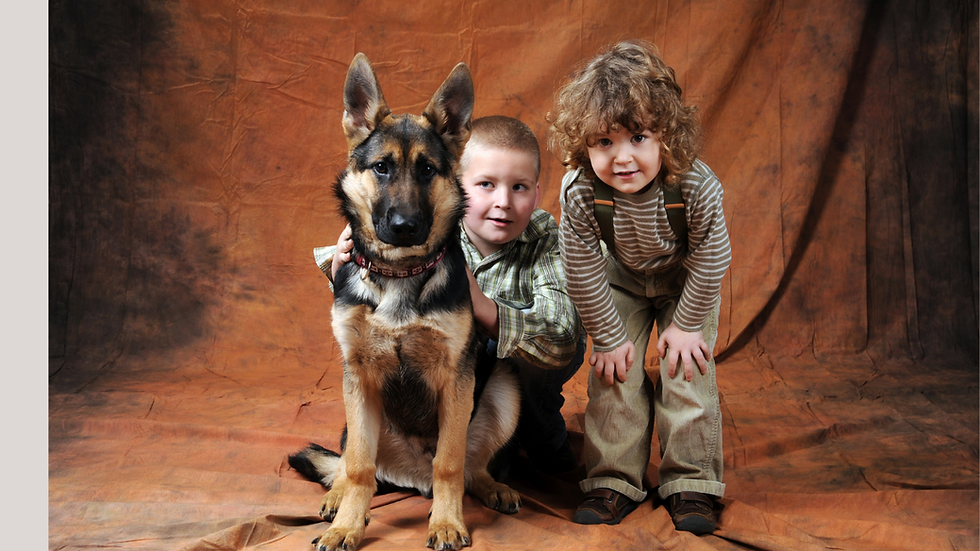The Benefits of Having a Dog for a Child: A Pawsitive Impact
- Advanced Animal Care
- Sep 10
- 3 min read

Keep your pet active and healthy with 18 in 1 vitamins andprobiotics. BUY NOW HERE
Dogs are more than just furry friends—they can profoundly influence a child’s emotional, social, and physical development. As a grandparent looking after your grandchild, you might be considering how a dog could enrich their life. From providing comfort to teaching responsibility, here’s a concise look at the key benefits of having a dog for a child, grounded in research and practical insights,

1. Emotional Support and Stress Relief
Dogs offer unconditional love, creating a safe space for kids to express emotions.
Why it matters: A 2020 study from the American Academy of Pediatrics found that pet interactions lower cortisol (stress hormone) levels and boost oxytocin, promoting calm.
How it helps: Cuddling or talking to a dog can soothe a child after a tough day. A dog like “Sherlock Bones” might be the perfect listener for a child’s worries, helping them feel secure.
Example: A shy child might find comfort confiding in their dog, building emotional resilience.

.2 Building Responsibility
and ConfidenceCaring for a dog teaches children essential life skills, fostering a sense of purpose.Why it matters: A 2017 University of Cambridge study shows pet care enhances responsibility and self-esteem in kids.
How it helps: Tasks like feeding or walking the dog give children a sense of accomplishment, boosting confidence and independence.
Example: An 8-year-old responsible for filling the dog’s water bowl daily feels proud of their contribution.

3. Encouraging Physical Activity and Health
Dogs naturally encourage kids to stay active, supporting physical and mental health.Why it matters: A 2019 Pediatric Research study found children with dogs are 50% more likely to meet the NHS’s 60-minute daily activity goal.
How it helps: Playing fetch or walking the dog keeps kids moving, reducing obesity risks and improving mood. Outdoor time can also spark social interactions.
Example: A child running with their dog in the park stays active and energized.

4. Social Skills and Empathy Development
Dogs help children connect with others and develop compassion.Why it matters: A 2021 Journal of Child Psychology and Psychiatry study noted that pet ownership boosts empathy and social competence.
How it helps: Learning to read a dog’s emotions (e.g., a wagging tail) teaches kids to understand others, aiding peer relationships. Dogs also draw people in, easing social anxiety.
Example: A shy child walking their dog might strike up conversations with neighbors, building confidence.

5. Providing Routine and Stability
Dogs thrive on routine, offering children predictability and structure.Why it matters: Consistent routines reduce anxiety, according to NSPCC guidance (2023).
How it helps: A dog’s schedule—feeding in the morning, walks in the afternoon—creates a comforting rhythm, fostering dependability in kids.
Example: A child sticking to a dog’s routine feels secure in a predictable daily structure

6. Fun and Joyful Moments
Dogs bring laughter and lightness to a child’s life.Why it matters: Play supports emotional resilience, per Child Development Journal (2020).
How it helps: Playful moments, like chasing a dog or teaching it tricks, create happy memories and spark creativity.
Example: A child giggling during a game of tug-of-war with their dog feels carefree and connected.
Practical Considerations
Before getting a dog, consider:Costs: Food, vet bills (~£50-£100/month). Charities like PDSA can offer support.
Time: Ensure you and your grandchild can manage care alongside school.
Suitability: Choose a gentle breed (e.g., Labrador) and train for safety.
Allergies: Confirm no health issues.
Conclusion
A dog can transform a child’s life by providing emotional support, teaching responsibility, encouraging activity, and fostering joy. These benefits promote growth and happiness, making a dog a wonderful addition to the family
Check out our collar and leads...HERE









Comments